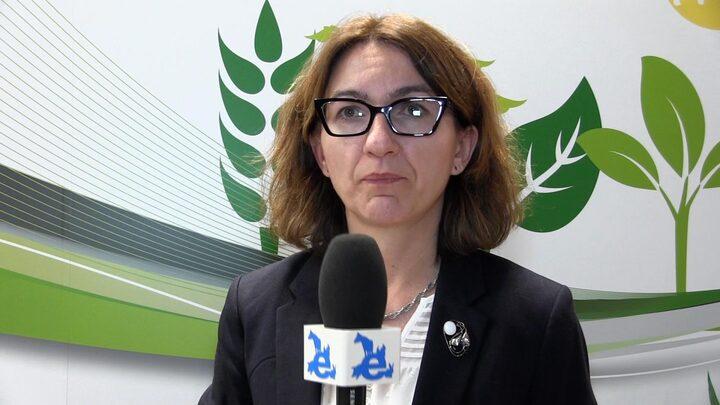Check out what is new in Poultry Industry
Find the best technical articles, forums, and videos on Poultry Industry at Engormix. Enter now and interact with the world's largest agricultural social network.
Featured comment:
Interesting the level of added SALT. Corn grain is low on sodium Na, but not wheat. Usually corn is sheaper than wheat, but wheat is highly digested. The state of Sonora Mexico usually has availabe wheat for feed rations. Not this year. ...
Comments : 1
Recommendations: 0
Featured comment:

@M.C. Fernando R. Feuchter A. You are absolutely right. Chickens are not stupid and they anticipate feed restriction. So, once feed is available they take advantage of it. After all, chickens are not concerned about feed conversion, they are concerned about survival. For this very reason they don't eat in the peak of the highest temperature as some poultry producers believe, they stay calm drinking water as needed and exposing to air movement if available, otherwise they will pant and open...
Comments : 44
Recommendations: 5
Our Partners:
I. INTRODUCTION Bacillus-based probiotics have gained increased attention as alternatives to antibiotic growth promoters (AGP) to support broiler performance in systems aiming to reduce the use of antibiotics and maintain gut health and function. Combatting poor gut health and disease susceptibility in an era without antibiotics has been made increasingly difficult due to the increasing cost of commercial feed ingredients. This has forced some producers to use cheaper dietary...
Comments : 1
Recommendations: 0
I. INTRODUCTION Egg-associated Salmonella infection is a significant international public health problem. Internal contamination of eggs with S. Enteritidis has been the principal concern in North America and Europe, whereas external contamination with S. Typhimurium has been the predominant issue in Australia. Some strategies for controlling egg-borne Salmonella are designed to act with precision against epidemiologically important serovars, but others are applicable...
Comments : 0
Recommendations: 0
Editorial
This month, our comprehensive search captured 74 new publications in poultry nutrition from 61 journals (March 10th to April 10th, 2025, Web of Science), featuring top contributions from Poultry Science (6), Frontier in Veterinary Science(6), Animals (5), Veterinary Medicine and Science (5), etc. ( Download the complete list...
Comments : 0
Recommendations: 0
I. INTRODUCTION With the current genetic focus being on longer laying cycles, there is a need to look for new ways of improving calcium metabolism in laying birds which are prone to osteoporosis in the latter stages of lay (Bain et al, 2016). Calcium pidolate (a highly soluble, absorbable salt with excellent gastrointestinal tolerance) has been around for 10-15 years in the commercial sector of the egg industry. Existing evidence suggests that this supplement has beneficial effects...
Comments : 0
Recommendations: 0
.jpg&w=3840&q=75)
R. Ramkutty, Chairman & Managing Director of Niswin Group of Companies, dives into decades of experience in the poultry feed industry, discussing key challenges like static agricultural growth, fluctuating raw material prices, and rising domestic demand. He also shares his vision for the future as India strides toward becoming a global economic leader....
Comments : 0
Recommendations: 0
I. INTRODUCTION Spotty Liver Disease (SLD) is characterized by the occurrence of multiple grey/white spots in the liver. It causes mortalities and reduction in egg output and is prevalent within the layer industry in Australia, especially within the free range sector of the industry (Grimes & Reece, 2011). The disease is less commonly found in barn and cage birds and parent stock (Scott, 2016). The recent identification of Campylobacter hepaticus, as the causative agent...
Comments : 0
Recommendations: 0
Featured comment:
Fluid Quip Technologies, LLC
@M.C. Fernando R. Feuchter A. Insect protein production has a very long way to go before it becomes a creditable source of protein for feed. We need to change the paradigm. When we start to consider insects as a viable bio-converter to transform waste streams into viable nutrient sources and the consider how these nutrients can be employed I believe is a more commercially viable proposition....
Comments : 16
Recommendations: 4
I. INTRODUCTION Supplementation of amino acids to reduce feather pecking behaviour and improve plumage condition has been previously studied and found to be successful (Savory, 1998, van Hierden et al., 2004). Feather eating behaviour performed by feather pecking birds suggests that feathers (predominately composed of keratin protein) may be consumed as an alternative source of amino acids, if digested. Methionine is an essential amino acid required for egg production and...
Comments : 0
Recommendations: 0


Lost in the Market Uncertainty Caused by the Outbreak
Suggested link
Featured comment:

@M.C. Fernando R. Feuchter A. Creatine is ONLY found in raw materials of animal origin; so yes, fish meal, meat and bone meal. The problem is variability; our analyses show variations of +/- 100% !! Reliance on creatine supply from such raw materials is therefore a real gamble...better to use a guaranteed source......
Comments : 3
Recommendations: 3
.jpg&w=3840&q=75)
Struggling with feed pellets breaking apart in water? Dealing with excessive dust in poultry, swine, or cattle feed? Magicoh Pellet Binder strengthens pellets, improves water stability, and enhances feed quality. Hear what Mr. Ronnick Fong (Hangzhou De Mark) has to say about it...
Comments : 0
Recommendations: 1


Innovative Directions in Aflatoxin Testing Point to Measureable Gains in Quality Of Lab Data
Suggested link
Corn remains the primary energy source in poultry diets. However, not all corn delivers equal nutritional value. Poor grain quality can significantly reduce its Metabolizable Energy (ME) for poultry, affecting both bird performance and production cost. Energy Loss Equation in Poultry Due to Poor-Quality Corn Barbarino and Rostagno (2001) developed an equation to estimate the Metabolizable Energy Lost (MEL) in poultry feed based on corn...
Comments : 0
Recommendations: 1
Dysbacteriosis, an imbalance in gut microbiota, impairs nutrient absorption and growth in broilers. Severe cases can cause wet litter and high mortality. AGPs have long been used to enhance gut health and performance, but their prolonged use raises concerns over antimicrobial resistance in birds and humans. Removing AGPs from broiler diets has reduced performance and increased gastrointestinal tract (GIT) diseases. To mitigate the impact of AGP-free diets on broiler performance, various...
Comments : 0
Recommendations: 2
At a time when livestock production is facing one of the biggest challenges in its recent history – the need to produce more with less and more cleanly – the balance between sustainability and profitability has become an inescapable priority. Industry cannot afford to ignore environmental constraints, but neither can it compromise the technical and economic viability of farms. As a family-owned company with 30 years of experience in animal nutrition solutions, at Liptosa we...
Comments : 1
Recommendations: 2
.jpg&w=3840&q=75)
Lilong Chai (University of Georgia) discusses advantages and issues of cage-free poultry houses regarding pecking behavior, egg production, and dust bathing, among other aspects, in this Engormix interview. ...
Comments : 0
Recommendations: 1
.jpg&w=3840&q=75)

40 Years of Success in China with Hy-Line (Mandarin-language video)
Suggested link
1. Introduction Factors such as investments in breeding facilities and the adoption of advanced technologies have been decisive in consolidating Brazil’s global leadership in broiler chicken exports [1]. Among the available structural typologies, the “dark house” stands out as an intensive production system, equipped with automated systems that control variables such as temperature, relative humidity, wind speed, and light intensity. The precise control of these...
Comments : 0
Recommendations: 0
1. Introduction The surface of eggshells can be contaminated by bacteria such as Escherichia coli and Staphylococcus spp., which may account for 84% and 77% of the present Gram-negative and Gram-positive bacteria, respectively [1]. In addition to antibiotic resistance [1], Escherichia coli and Staphylococcus spp. (e.g., Staphylococcus aureus) may also be associated with the death of chicken embryos [2,3]. Eggs appear to be quite vulnerable to several threats, even biofilm...
Comments : 0
Recommendations: 0
1. Introduction The preservation of indigenous poultry breeds is not only for cultural and emotional reasons, but also for economic ones. This is particularly true when there is a demand for delicate products of special quality, in terms of their origin, production and processing [1]; Kohlschutter et al. [2] argued similarly. The exceptional quality, excellent variety of flavors, and dietary effects, based on the emotionally valued gastronomic tradition, are the prerequisite for the...
Comments : 0
Recommendations: 0
The egg industry in the United States maintains approximately 300 million hens each year (United Egg Producers, 2025). For every laying hen that is hatched, approximately one male...
Comments : 0
Recommendations: 1
































